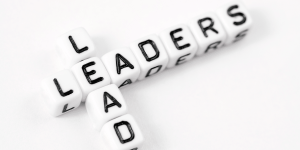Kaizen is a Japanese term that means “continuous improvement.” It is a philosophy or approach that involves making small, incremental changes to a process or system in order to improve its efficiency, quality, and effectiveness over time. Kaizen emphasizes the importance of involving all members of an organization in the improvement process and encourages the use of data and feedback to identify areas for improvement. This approach is often used in manufacturing and business management but can be applied to any process or system. The goal of kaizen is to create a culture of continuous improvement, where everyone is actively engaged in finding ways to make things better.
Kaizen is often associated with the Japanese manufacturing industry and the Toyota Production System, but it has since spread to many other industries and countries around the world. It is a key component of Lean manufacturing and Six Sigma methodologies.
Kaizen involves a cyclical process of Plan-Do-Check-Act (PDCA) where improvements are planned, implemented, monitored, and then further improved upon in an iterative manner. The process is designed to be ongoing and never-ending, with the aim of constantly improving the overall performance of a system or process.

One of the main principles of kaizen is the idea of “respect for people,” which involves valuing the knowledge, expertise, and contributions of all members of an organization. This principle encourages open communication, collaboration, and teamwork, and creates an environment where everyone is empowered to identify and solve problems.
Kaizen can be applied to various aspects of a business, including manufacturing processes, supply chain management, customer service, and administrative processes. The approach involves identifying inefficiencies and waste in a process, eliminating them, and then continuously improving the process over time.
Overall, kaizen is a philosophy that emphasizes the importance of constant improvement, and encourages organizations to create a culture of continuous learning and growth.
In addition to the PDCA cycle, kaizen also incorporates several tools and techniques that can be used to identify and solve problems. These tools include:
- Gemba Walks: Going to the place where work is done and observing the process in action to identify potential areas for improvement.
- Value Stream Mapping: A visual representation of a process that helps identify areas of waste and inefficiency.
- 5S: A methodology that involves sorting, simplifying, sweeping, standardizing, and sustaining a workplace to improve efficiency and organization.
- Kanban: A system for managing inventory and production levels that helps prevent overproduction and waste.
- Poka-Yoke: The use of mistake-proofing devices or procedures to prevent errors and defects.
Kaizen is not just limited to improving manufacturing or business processes; it can also be applied to personal development and individual productivity. The concept of “personal kaizen” involves making small, incremental changes to one’s daily habits and routines in order to become more efficient and effective.
In summary, kaizen is a philosophy and approach that emphasizes continuous improvement in all aspects of an organization or individual. It involves a cycle of planning, implementing, monitoring, and improving, and encourages the use of tools and techniques to identify and solve problems. Kaizen aims to create a culture of continuous learning and growth, and is applicable to many areas of life and work.
Related: Leadership insights from Forbes












